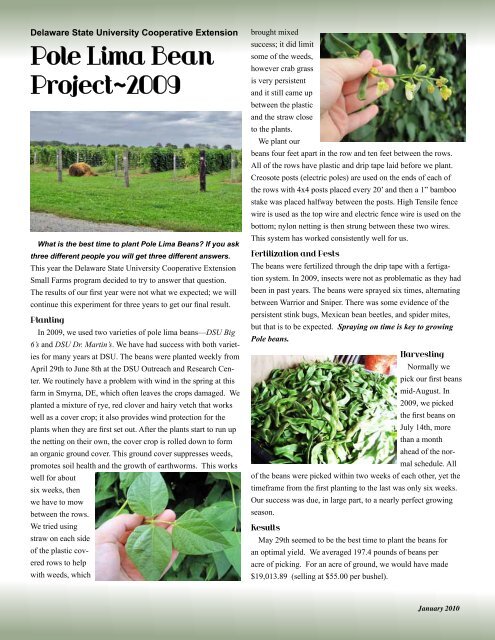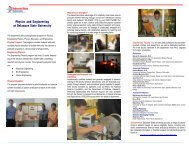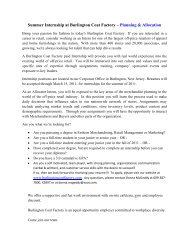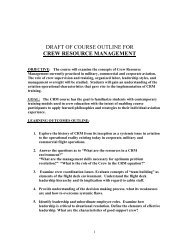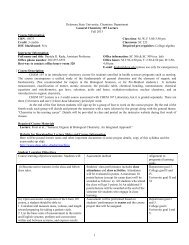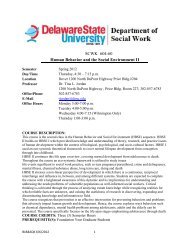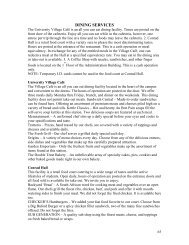Pole Lima Bean Project~2009 - Delaware State University
Pole Lima Bean Project~2009 - Delaware State University
Pole Lima Bean Project~2009 - Delaware State University
You also want an ePaper? Increase the reach of your titles
YUMPU automatically turns print PDFs into web optimized ePapers that Google loves.
<strong>Delaware</strong> <strong>State</strong> <strong>University</strong> Cooperative Extension<strong>Pole</strong> <strong>Lima</strong> <strong>Bean</strong><strong>Project~2009</strong>What is the best time to plant <strong>Pole</strong> <strong>Lima</strong> <strong>Bean</strong>s? If you askthree different people you will get three different answers.This year the <strong>Delaware</strong> <strong>State</strong> <strong>University</strong> Cooperative ExtensionSmall Farms program decided to try to answer that question.The results of our first year were not what we expected; we willcontinue this experiment for three years to get our final result.PlantingIn 2009, we used two varieties of pole lima beans—DSU Big6’s and DSU Dr. Martin’s. We have had success with both varietiesfor many years at DSU. The beans were planted weekly fromApril 29th to June 8th at the DSU Outreach and Research Center.We routinely have a problem with wind in the spring at thisfarm in Smyrna, DE, which often leaves the crops damaged. Weplanted a mixture of rye, red clover and hairy vetch that workswell as a cover crop; it also provides wind protection for theplants when they are first set out. After the plants start to run upthe netting on their own, the cover crop is rolled down to forman organic ground cover. This ground cover suppresses weeds,promotes soil health and the growth of earthworms. This workswell for aboutsix weeks, thenwe have to mowbetween the rows.We tried usingstraw on each sideof the plastic coveredrows to helpwith weeds, whichbrought mixedsuccess; it did limitsome of the weeds,however crab grassis very persistentand it still came upbetween the plasticand the straw closeto the plants.We plant ourbeans four feet apart in the row and ten feet between the rows.All of the rows have plastic and drip tape laid before we plant.Creosote posts (electric poles) are used on the ends of each ofthe rows with 4x4 posts placed every 20’ and then a 1” bamboostake was placed halfway between the posts. High Tensile fencewire is used as the top wire and electric fence wire is used on thebottom; nylon netting is then strung between these two wires.This system has worked consistently well for us.Fertilization and PestsThe beans were fertilized through the drip tape with a fertigationsystem. In 2009, insects were not as problematic as they hadbeen in past years. The beans were sprayed six times, alternatingbetween Warrior and Sniper. There was some evidence of thepersistent stink bugs, Mexican bean beetles, and spider mites,but that is to be expected. Spraying on time is key to growing<strong>Pole</strong> beans.HarvestingNormally wepick our first beansmid-August. In2009, we pickedthe first beans onJuly 14th, morethan a monthahead of the normalschedule. Allof the beans were picked within two weeks of each other, yet thetimeframe from the first planting to the last was only six weeks.Our success was due, in large part, to a nearly perfect growingseason.ResultsMay 29th seemed to be the best time to plant the beans foran optimal yield. We averaged 197.4 pounds of beans peracre of picking. For an acre of ground, we would have made$19,013.89 (selling at $55.00 per bushel).January 2010
2009 <strong>Lima</strong> <strong>Bean</strong> Trial TotalsYear2009TreatmentDateRep # 22-Jul 10-Aug 20-Sep Total Avg PoundsPer 80' RowBu Per/ Acre29-Apr 10B 44.4 65.6 61.8 171.8 466.83 Ib / Acre 9336.67Potential Grossvalue/acre9B 50.4 62.4 80.4 193.28B 55.1 74.8 65.3 195.2Average Bu 282.93$15,561.117-May 10A 28.6 90.4 79.1 198.1 487.75 Ib / Acre 9755.009A 55.2 64.2 63.6 1838A 72.4 78.6 53.2 204.2Average Bu 295.6115-May 7B 57.8 40.3 58.9 157 435.50 Ib / Acre 87106B 84.6 27.4 63.2 175.25B 69.2 48 73.2 190.4Average Bu 263.9422-May 7A 55.2 72.4 54.3 181.9 514.08 Ib / Acre 10281.676A 83.8 69.7 74.6 228.15A 78.3 52.3 76.3 206.9Average Bu 311.5729-May 4B 87.2 33.4 76.8 197.4 570.42 Ib / Acre 11408.333B 97.2 48.9 73.6 219.72B 96.4 92.8 78.2 267.4Average Bu 345.718-Jun 4A 32.6 36 68.5 137.1 395.75 Ib / Acre 79153A 28.9 12 76.3 117.22A 90.2 56.2 74.2 220.6Average Bu 239.85$16,258.33$14,516.67$17,136.11$19,013.89$13,191.6720-May 1A 52.4 50.7 54.2 157.3 425.63 Ib / Acre 8512.51B 89.6 32.8 60.8 183.2Average Bu 257.95$14,187.50For more information about this project, or for assistance with your smallfarm production needs, contact DSU Cooperative Extension:Michawl B. WasylkowskiJohn ClendanielExtension EducatorAgriculture Program LeaderSmall Farms and NRCSCollege of AgricultureCollege of Agricultureand Related Sciencesand Related Sciences(302) 857- 6425(302) 857-6438E- mail: jclendaniel@desu.eduEmail: Mwasylkowski@desu.eduMegan PleasantonStudent Outreach AssistantCooperative Extension Education in Agriculture, 4-H andHome Economics, <strong>Delaware</strong> <strong>State</strong> <strong>University</strong>, <strong>University</strong>of <strong>Delaware</strong> and United <strong>State</strong>s Department of Agriculturecooperating, Dr. Dyremple B. Marsh, Dean and Administrator.It is the policy of <strong>Delaware</strong> Cooperative Extension thatno person shall be subjected to discrimination on the groundsof race, color, sex, disability, age, or national origin.


